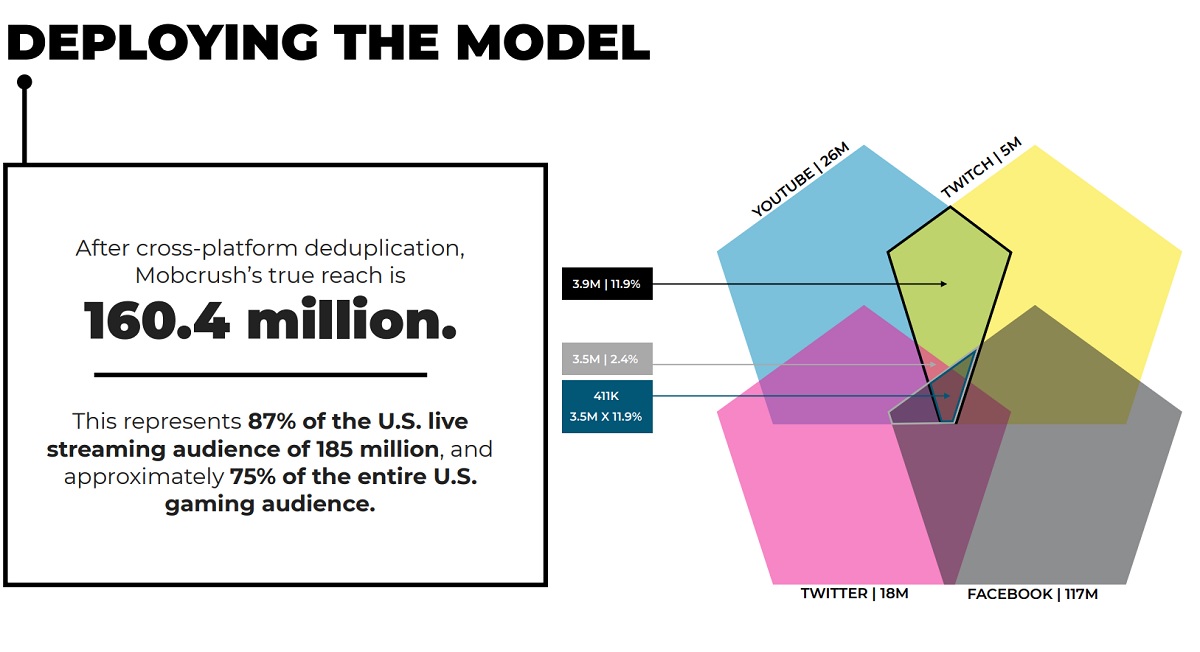Whenever you hear how many people an internet service or a gamer reaches, it’s usually an astronomical number. Take Mobcrush, the mobile livestreaming service that reaches more than 1.5 billion social media users in the world.
How can that be, given the country only has about 326 million people in it? That’s because people have multiple social media accounts where they follow a lot of the same folks. And that’s why, for the sake of accuracy in advertising numbers, it’s important to “deduplicate” those numbers. For Mobcrush, the result is that it reaches 160 million people in the U.S., or about 75 percent of the total U.S. gaming audience, based on an estimate from ThinkNow Research.

Unlock premium content and VIP community perks with GB M A X!
Join now to enjoy our free and premium membership perks.
![]()

![]()